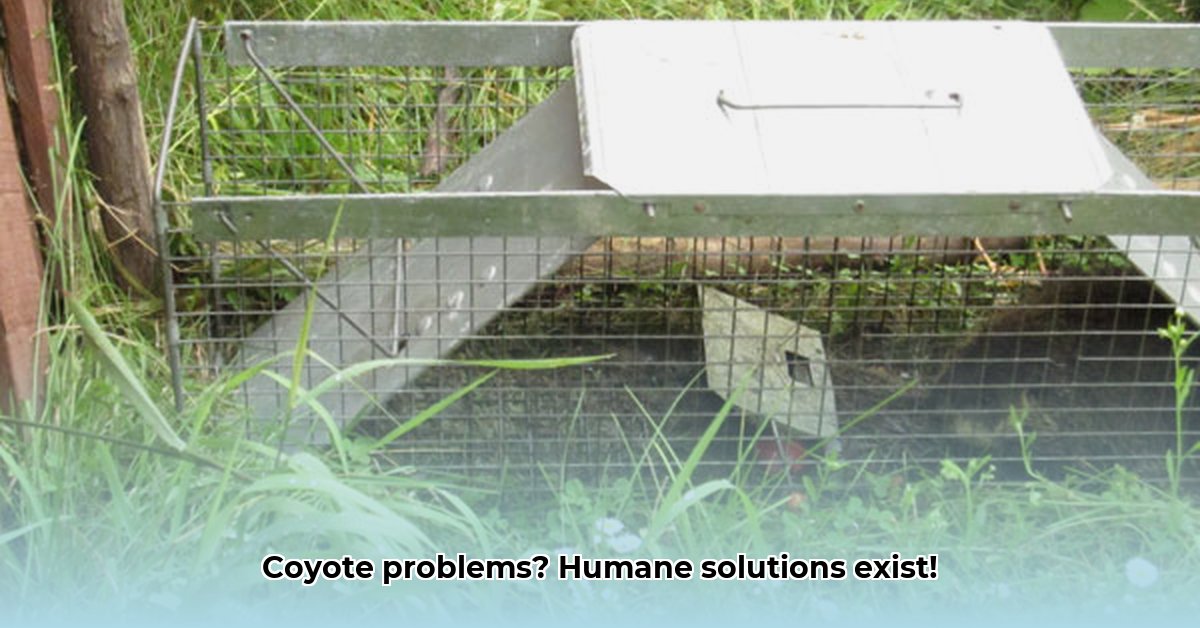
Dealing with coyotes near your home requires a balanced approach prioritizing safety and humane treatment. While coyote poison might seem like a quick solution, it presents significant legal, ethical, and environmental risks. This guide outlines safer and more effective alternatives. For pet safety resources, check out this helpful guide.
Understanding Coyote Behavior
Coyotes are adaptable and opportunistic. Their presence often stems from readily available food sources. Unsecured trash, pet food left outdoors, and even spilled birdseed can attract them. Understanding their behavior is crucial for effective deterrence. They are not inherently aggressive; they're simply seeking sustenance.
Non-Lethal Coyote Control: A Humane Approach
Non-lethal methods are generally preferred for their safety and ethical considerations. They often prove more effective long-term than lethal approaches.
1. Habitat Modification: Making Your Property Less Appealing
This involves making your yard less attractive to coyotes by removing their resources.
- Secure Trash: Use heavy-duty trash cans with tightly fitting lids. Coyotes are strong and can easily access flimsy containers.
- Eliminate Food Sources: Keep pet food indoors. Clean up any spilled food or fallen fruit immediately. Coyotes are opportunistic feeders.
- Protect Gardens: Fence off gardens and compost bins with chicken wire to deter foraging.
- Trim Vegetation: Keep your yard neatly trimmed; high grass and shrubs provide cover for coyotes.
2. Live Trapping: A More Involved but Humane Option
Live trapping involves capturing and relocating coyotes. This method requires expertise and often necessitates professional assistance.
- Consult a Professional: Contact your local animal control or a licensed wildlife removal specialist for advice. They can help with trapping methods and necessary permits.
- Proper Trap Placement: Proper placement is critical. Professionals can help ensure safe and effective trapping, minimizing risks to both the coyote and other animals.
- Legal Relocation: Coyote relocation sometimes requires permits and might be prohibited in certain areas. Professional assistance ensures compliance with local regulations.
Non-Lethal Method Comparison:
| Feature | Pros | Cons |
|---|---|---|
| Safety | Safe for humans, pets, and wildlife. | Effectiveness depends on coyote behavior and persistence. |
| Ethics | Ethically sound and aligns with humane wildlife management. | Requires ongoing effort and vigilance. |
| Cost | Relatively inexpensive (habitat modification); more expensive (professional trapping). | May not be completely successful; further interventions might be needed. |
Lethal Coyote Control: A Last Resort
Lethal methods, such as shooting or poisoning, should only be considered as an absolute last resort. They involve significant risks, legal complexities, and ethical concerns. Poisoning is often illegal and dangerous, potentially harming non-target species or even humans.
Legal Considerations: Know the Laws
Before any action, thoroughly research local, state, and federal regulations on coyote control. Contact your local wildlife agency for definitive guidance. Improper methods can result in fines or legal repercussions.
Safety Precautions: Prioritize Safety
Always prioritize personal safety when dealing with wildlife. If considering lethal methods, proper training and licensing are essential. Even for non-lethal approaches, avoid direct contact. Professional help is often the best approach.
Ethical Considerations: Responsible Wildlife Management
Ethical wildlife management minimizes harm and understands the broader ecosystem. Prioritize humane solutions and always choose the least harmful method. Remember that responsible management focuses on long-term sustainability, balancing human safety and wildlife well-being.
How to Humanely Deter Coyotes: A Multi-Faceted Approach
Success in coyote deterrence often comes from a multi-pronged approach combining several techniques.
- Remove Attractants: This is the foundation; eliminate food, water, and shelter sources.
- Use Non-Lethal Deterrents: Incorporate fencing, motion-activated lights, noisemakers, and scent repellents to create a less appealing environment.
- Seek Professional Help: Contact a licensed wildlife removal service when necessary.
Remember that patience and a well-planned strategy are key to successful and humane coyote control. The ethical and legal ramifications of harming animals are significant. Prevention and humane deterrents are always preferred.